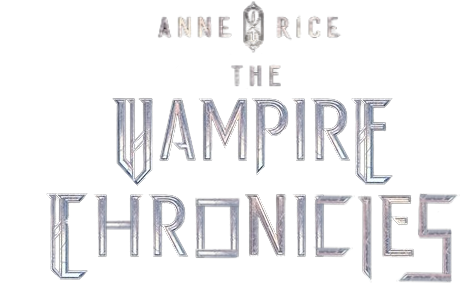
Interview with the Vampire is a vampire best-seller novel by Anne Rice written in 1973 and published in 1976. The novel, the first to feature the enigmatic vampire anti-hero Lestat, was followed by several sequels, collectively known as The Vampire Chronicles. A film version, Interview with the Vampire: The Vampire Chronicles, was released in 1994, starring Tom Cruise, Brad Pitt, Kirsten Dunst, Antonio Banderas, Stephan Rea, and Christian Slater. A television adaptation by AMC was released in October 2022, and was renewed for a second season.
Plot summary[]
In San Francisco, a vampire named Louis tells his 200-year-long life story to an interviewer (Daniel Molloy, although only referred to as "the boy" in the novel).
In 1791, Louis was a young plantation owner living south of New Orleans, Louisiana. Distraught and suicidal over the death of his brother Paul (his wife and daughter in the movie), which he blames himself for, Louis is approached by a vampire named Lestat, who desires his plantation. Lestat turns Louis into a vampire (although initially Louis merely begs to be killed) and the two become immortal companions. Lestat spends some time feeding off the local plantation slaves, while Louis feeds from animals; Louis finds it impossible to disconnect himself from his mortal morals and engage in malicious murder.
Louis and Lestat are forced to leave when Louis' slaves begin to fear the monsters with which they live and instigate an uprising. Louis sets his own plantation aflame; he and Lestat exterminate the plantation slaves to keep word from spreading about vampires living in Louisiana. Louis bends under Lestat's influence and begins feeding from humans, slowly coming to terms with his 'killer' nature while also becoming increasingly repulsed by what he perceives as Lestat's total lack of compassion for the humans he preys upon. Escaping to New Orleans proper, Louis feeds off a plague-ridden young girl one night, whom he finds next to the corpse of her mother. As the girl reaches the point of death, Lestat then turns her into a vampire "daughter" for them, naming her "Claudia" (as her real name is never revealed).
Louis is horrified that Lestat has turned a child into a vampire, but instantly falls in love with Claudia and cares for her tenderly and dotingly. She takes to killing easily, but Claudia begins to hate Lestat as she realizes she can never grow up; although her mind matures into an intelligent, assertive and seductive woman, her body remains that of a 6-year-old. After 65 years of living together, Claudia hatches a plot to dispose of Lestat by poisoning him and cutting his throat. Claudia and Louis then dump his body into a nearby swamp. After realizing that they seem to now be the only vampires living in America, Claudia desires to travel to Europe with Louis and seek out "Old World" vampires.
As Louis and Claudia prepare to flee to Europe, Lestat appears, having survived and recovered from Claudia's attack, and attacks them in turn. Louis sets fire to their home and barely escapes with Claudia, leaving a furious Lestat to be consumed by the flames.
Arriving in Europe, Louis and Claudia seek out more of their kind. They travel throughout eastern Europe first and do indeed encounter vampires, but these vampires appear to be nothing more than animated corpses, mindless and unintelligible. It is only when they reach Paris that they encounter vampires like themselves - specifically, the 400-year-old vampire Armand and his coven, the Théâtre des Vampires. Inhabiting an ancient theater, Armand and his vampire coven disguise themselves as humans and feed on live, terrified humans in mock-plays before a live human audience who think the killings are merely a very realistic performance. Claudia is repulsed by these vampires and what she considers to be their cheap theatrics, but Louis quickly falls under Armand's spell and becomes very attracted to him.
Fearing that Louis will leave her for Armand, Claudia demands that Louis turn a human Parisian dollmaker, Madeleine, into a vampire to serve as both a mother figure and a replacement for Louis. Louis at first refuses but, after realizing Claudia's plight, gives in and makes Madeleine into a vampire. Louis, Madeleine and Claudia live together for a brief time but all three are abducted one night by the Theatre vampires. Lestat has arrived - having survived the fire in New Orleans - and his accusations against Louis and Claudia result in Louis being locked in a coffin, while Claudia and Madeleine are thrown into a cell with an open roof. Louis survives, but Madeleine and Claudia are burned to death by the rising sun. Armand arrives and releases Louis from the coffin. Louis finds the ashen remains of Claudia and Madeleine and is devastated. He later returns to the Theatre the following night, burning it to the ground and killing all the vampires inside, and leaves with Armand.
Louis and Armand then travel across Europe together for several years, but Louis never fully recovers from Claudia's death and, eventually, he and Armand drift apart and go their separate ways. Tired of the Old World, Louis eventually returns to America and New Orleans in the early 20th century, living as a loner; he feeds off any humans that cross his path but lives in the shadows and never creates another companion for himself.
Telling the boy of one last (either fictitious or simply neglected by Lestat in later books) encounter with Lestat in New Orleans, Louis ends his tale; after 200 years, he is weary of immortality as a vampire and all the pain and suffering to which he has had to bear witness. The boy, however, seeing only the great powers granted to a vampire, begs to be made into a vampire himself. Infuriated that his interviewer learned nothing from his story, Louis refuses, attacks him, and vanishes without a trace.
Recovering from the attack, the boy notes the address of the house where Louis last saw Lestat in New Orleans, and then leaves to track down Lestat - and the "Dark Gift " - himself.
Publication and critical reaction[]
Published in 1976, Interview with the Vampire quickly became a cult success, and a prominent influence on present Goth culture. The novel was set apart from its predecessors of the vampire genre by its confessional tone from the vampire's perspective, touching on existential despair and the sheer boredom of lifeless immortality.
Rice reported in her biography that the themes of vampirism and the tone of the book echoed the loss of her daughter Michele from leukemia in 1972. Interview is distinct from its sequels in its somber tone, and subsequently the perspective shifts to that of the vivacious Lestat. Nevertheless, it remains the best-selling and best-received of Rice's books.









